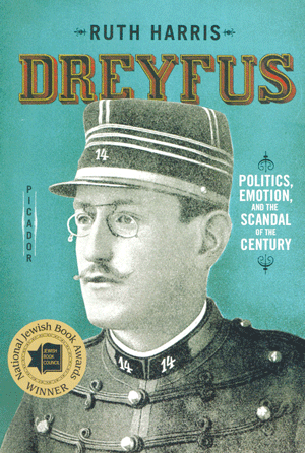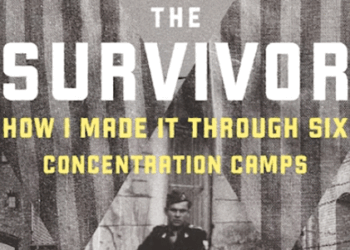Reviewed by NEAL GENDLER
The conviction of Alfred Dreyfus was so outrageous that it polarized France and led, indirectly, to the rebirth of Jewish nationhood.
Dreyfus was a French artillery captain wrongly convicted of spying for Germany in 1894, and sentenced to solitary confinement on sweltering Devil’s Island, from which many prisoners never returned.
The case began with a note stolen from a German embassy wastebasket about obtaining French artillery information. Another stolen note mentioned a “scoundrel D.” The rush to find “D,” coupled with anti-Semitism, led to a cursory investigation, a faulty conclusion and a sham military trial.
Public condemnation of Dreyfus, a well-off, assimilated Jew, built to a roar, particularly among the political and Catholic right. But some people saw through the fraud, and Dreyfus soon had strong backing from uncommon bedfellows in intellectual, anarchist and labor circles, and from prominent Jews, especially journalist-politician Joseph Reinach and his scholar brothers, who worked tirelessly — and spent heavily — on Dreyfus’ behalf.

As questioning of the conviction swelled, the army not only refused to admit error, but even forged documents to “perfect” the case. The country divided between Dreyfus supporters, or Dreyfusards, and anti-Dreyfusards, a split author Ruth Harris says also was known as the intellectuals versus the anti-intellectuals. No mild debate, the “Dreyfus Affair” brought riots, resignations of national officials, imprisonment of an officer who discovered the fraud, a National Assembly fistfight, suicide of the army’s forger, an attempted coup and two assassination attempts.
The spy was Ferdinand Walsin Esterhazy, an officer of sleazy reputation given a sham court-martial for purposes of acquittal, in January 1898. Two days later, L’Aurore published novelist Emile Zola’s famous “J’accuse (I accuse)” letter, allegations of a cover-up filling the front page of a newspaper printed in 300,000 copies. Harris calls it “one of the greatest journalistic events of the 19th century.”
Violence began immediately, with Jews and Jewish businesses attacked. The army sued Zola for criminal libel and riots spread across France. Convicted, Zola fled in disguise to England.
Although Esterhazy later confessed publicly at least twice, the army wouldn’t admit its wrongdoing.
This is fascinating, maddening stuff. Harris lays out the results of massive research in 385 pages of easy reading (except for too much untranslated French); but it’s rather a lot for people more interested in Dreyfus than in fin de siècle France. The cast rivals War and Peace; and Harris tells who they were, what shaped their views and their roles in the Affair. These interesting accounts enormously deepen our understanding, but en masse, they bog down the middle of the book.
One of the book’s revelations is the astonishing extent and depth of anti-Semitism in the land proclaiming “liberty, fraternity and equality.” There wasn’t even any Israel to blame. The viciousness darkens rose-tinted portrayals of the Gilded Age and makes it easier to understand how Jews could be packed away to death 40 years later.
The Paris correspondent of a Viennese newspaper, assimilated Jew Theodor Herzl, covered the army’s 1895 public humiliation of Dreyfus — a ceremony stripping all decoration from his uniform and breaking his sword. Stunned by mobs shouting “Death to the Jews,” Herzl concluded that Jews needed their own nation, worked to create an appropriate organization, and published The Jewish State in 1896. In 1897, the First World Zionist Congress convened, beginning modern political Zionism.
Continual Dreyfusard efforts won Dreyfus a return from near death for a second court-martial in 1899, at which he was convicted again. But politicking and pressure led the president to pardon him10 days later to end the turmoil, freeing Dreyfus but leaving him under a cloud. Not until 1906, after an honest investigation with leftists in power, was he exonerated, promoted to lieutenant colonel and awarded the Legion of Honor. He retired in 1907.
His fullest, most-satisfying rehabilitation came later, during World War I. Nearly 55, he was recalled to active duty.
Longer works about Dreyfus have been written, but I can’t imagine one better.
***
Neal Gendler is a Minneapolis writer and editor.
(American Jewish World, 7.8.11)




















